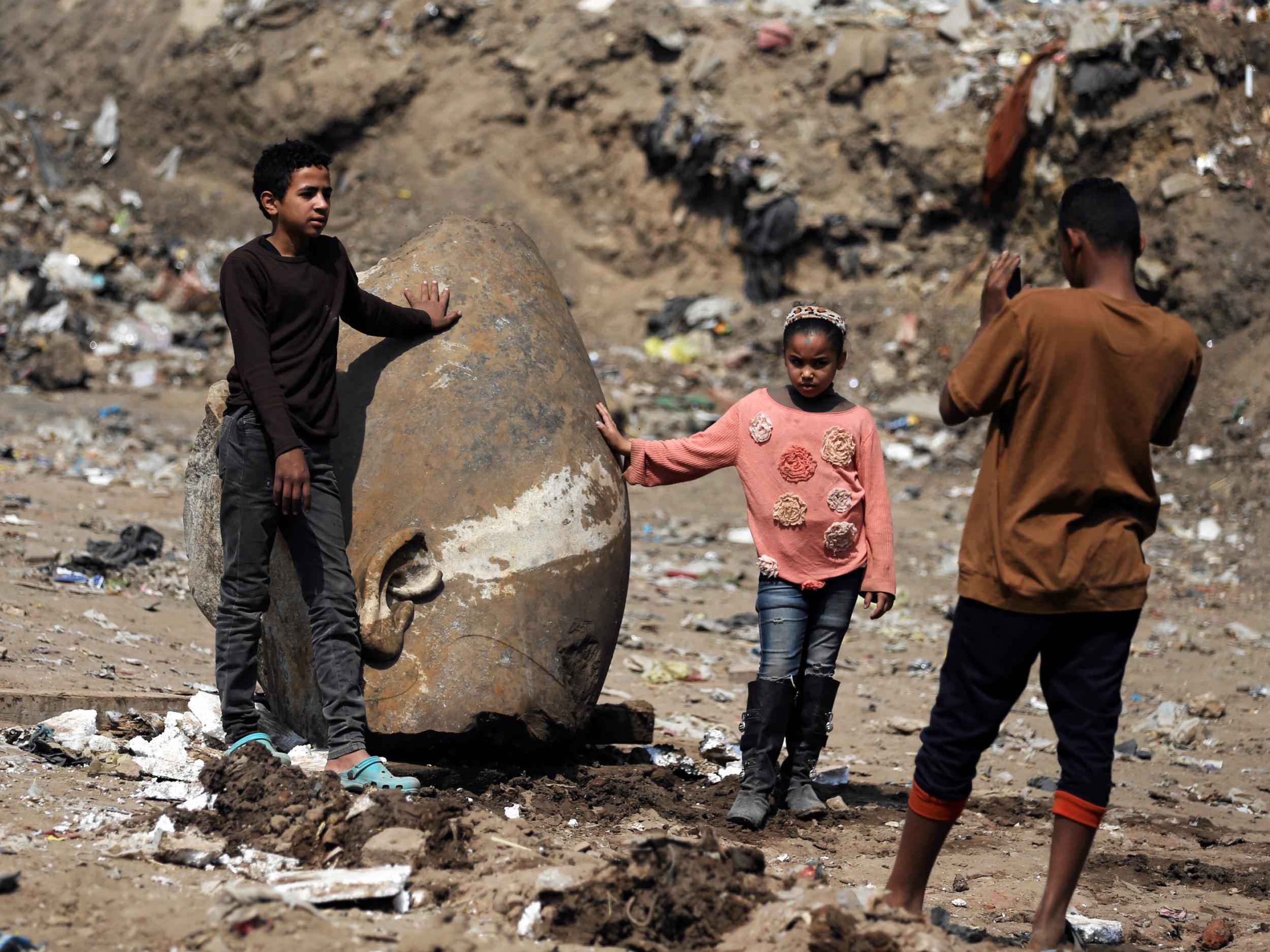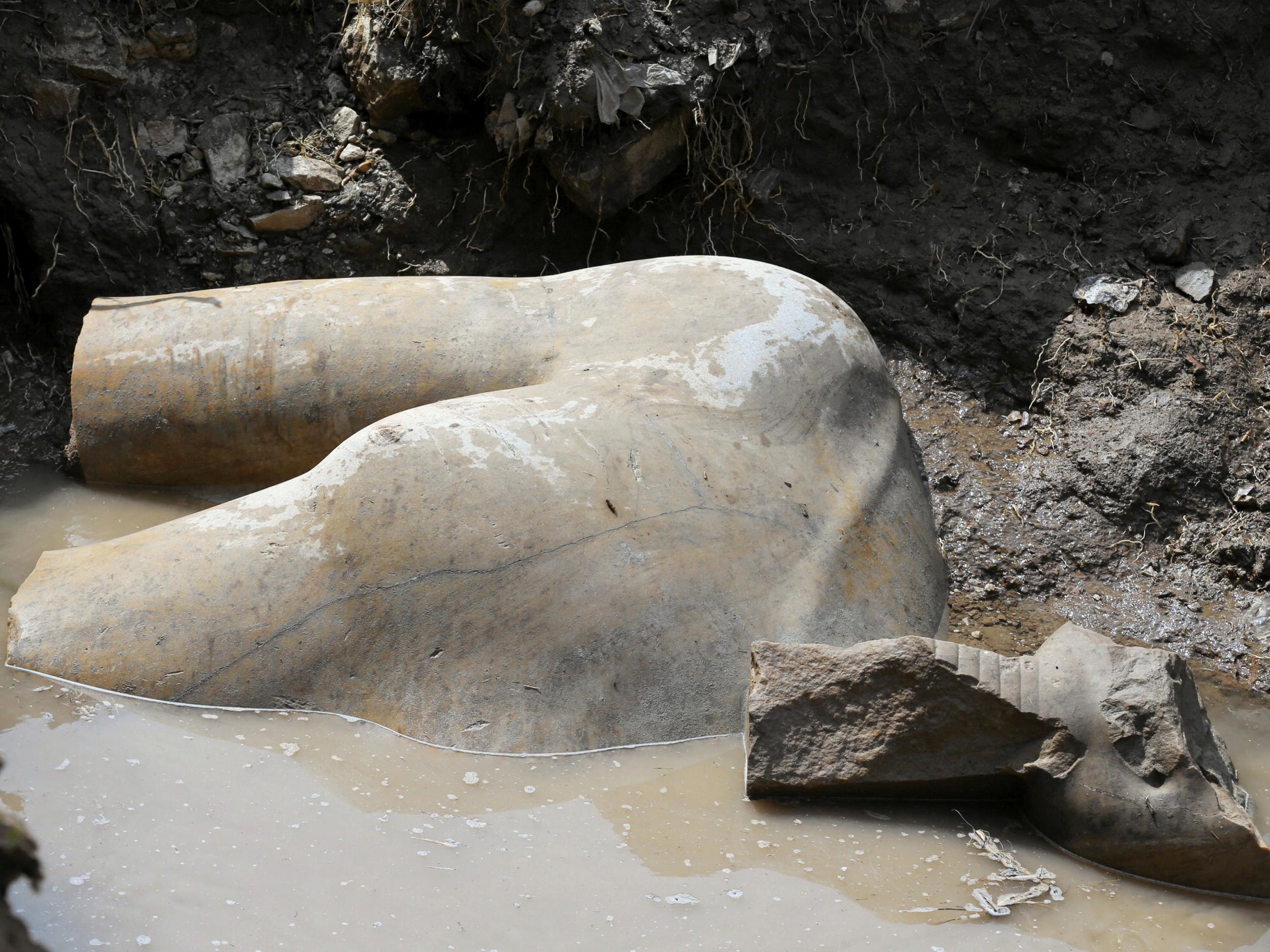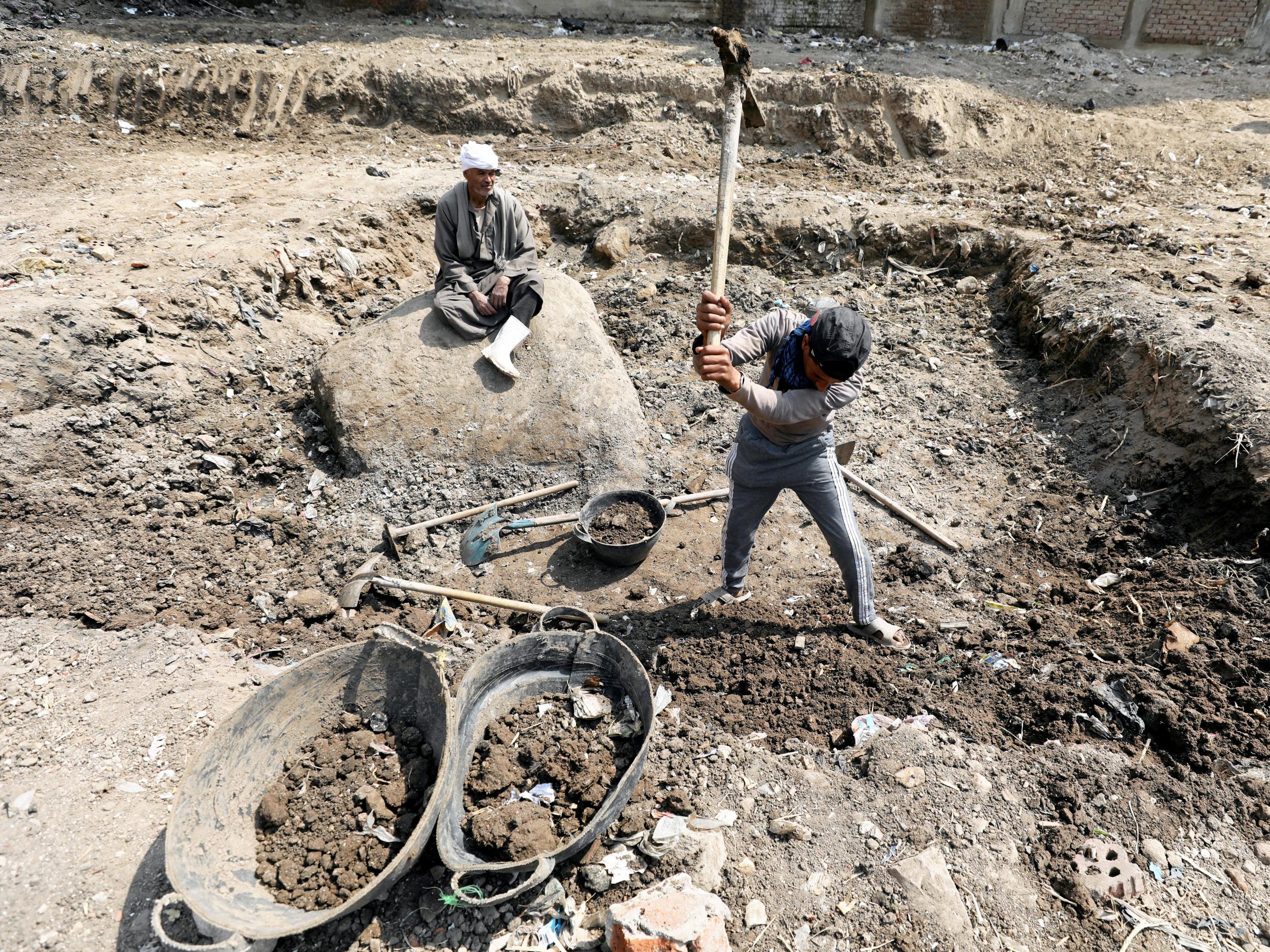Giant statue of Egyptian Pharaoh Ramses II found in Cairo slum by archaelogists
Discovery of quartzite colossus near ruins of ancient city of Heliopolis hailed by Antiques Ministry as among most significant ever

Your support helps us to tell the story
From reproductive rights to climate change to Big Tech, The Independent is on the ground when the story is developing. Whether it's investigating the financials of Elon Musk's pro-Trump PAC or producing our latest documentary, 'The A Word', which shines a light on the American women fighting for reproductive rights, we know how important it is to parse out the facts from the messaging.
At such a critical moment in US history, we need reporters on the ground. Your donation allows us to keep sending journalists to speak to both sides of the story.
The Independent is trusted by Americans across the entire political spectrum. And unlike many other quality news outlets, we choose not to lock Americans out of our reporting and analysis with paywalls. We believe quality journalism should be available to everyone, paid for by those who can afford it.
Your support makes all the difference.Archaeologists from Egypt and Germany have found a massive eight-metre statue submerged in ground water in a Cairo slum that they say probably depicts revered Pharaoh Ramses II, who ruled Egypt more than 3,000 years ago.
The discovery, hailed by the Antiquities Ministry as one of the most important ever, was made near the ruins of Ramses II's temple in the ancient city of Heliopolis, located in the eastern part of modern-day Cairo.
“Last Tuesday they called me to announce the big discovery of a colossus of a king, most probably Ramses II, made out of quartzite,” Antiquities Minister Khaled al-Anani told Reuters on Thursday at the site of the statue's unveiling.
The most powerful and celebrated ruler of ancient Egypt, the pharaoh also known as Ramses the Great was the third of the Nineteenth Dynasty of Egypt and ruled from 1279 to 1213 BCE.
He led several military expeditions and expanded the Egyptian Empire to stretch from Syria in the east to Nubia in the south. His successors called him the “Great Ancestor”.
“We found the bust of the statue and the lower part of the head and now we removed the head and we found the crown and the right ear and a fragment of the right eye,” Anani said.
On Thursday, archaeologists, officials, local residents, and members of the news media looked on as a massive forklift pulled the statue's head out of the water

The joint Egyptian-German expedition also found the upper part of a life-sized limestone statue of Pharaoh Seti II, Ramses II's grandson, that is 80 centimetres long.
The sun temple in Heliopolis was founded by Ramses II, lending weight to the likelihood the statue is of him, archaeologists say.
It was one of the largest temples in Egypt, almost double the size of Luxor's Karnak, but was destroyed in Greco-Roman times. Many of its obelisks were moved to Alexandria or to Europe and stones from the site were looted and used for building as Cairo developed.
Experts will now attempt to extract the remaining pieces of both statues before restoring them. If they are successful and the colossus is proven to depict Ramses II, it will be moved to the entrance of the Grand Egyptian Museum, set to open in 2018.
The discovery was made in the working class area of Matariya, among unfinished buildings and mud roads.

Dietrich Raue, head of the expedition's German team, told Reuters that ancient Egyptians believed Heliopolis was the place where the sun god lives, meaning it was off-limits for any royal residences.
“The sun god created the world in Heliopolis, in Matariya. That's what I always tell the people here when they say is there anything important. According to the pharaonic belief, the world was created in Matariya,” Raue said.
“That means everything had to be built here. Statues, temples, obelisks, everything. But... the king never lived in Matariya, because it was the sun god living here.”
The find could be a boon for Egypt's tourism industry, which has suffered many setbacks since the uprising that toppled autocrat Hosni Mubarak in 2011 but remains a vital source of foreign currency. The number of tourists visiting Egypt slumped to 9.8 million in 2011 from more than 14.7 million in 2010.
A bomb attack that brought down a Russian plane carrying 224 people from a Red Sea resort in October 2015 further hit arrivals, which dropped to 1.2 million in the first quarter of 2016 from 2.2 million a year earlier.
Reuters
Join our commenting forum
Join thought-provoking conversations, follow other Independent readers and see their replies
Comments